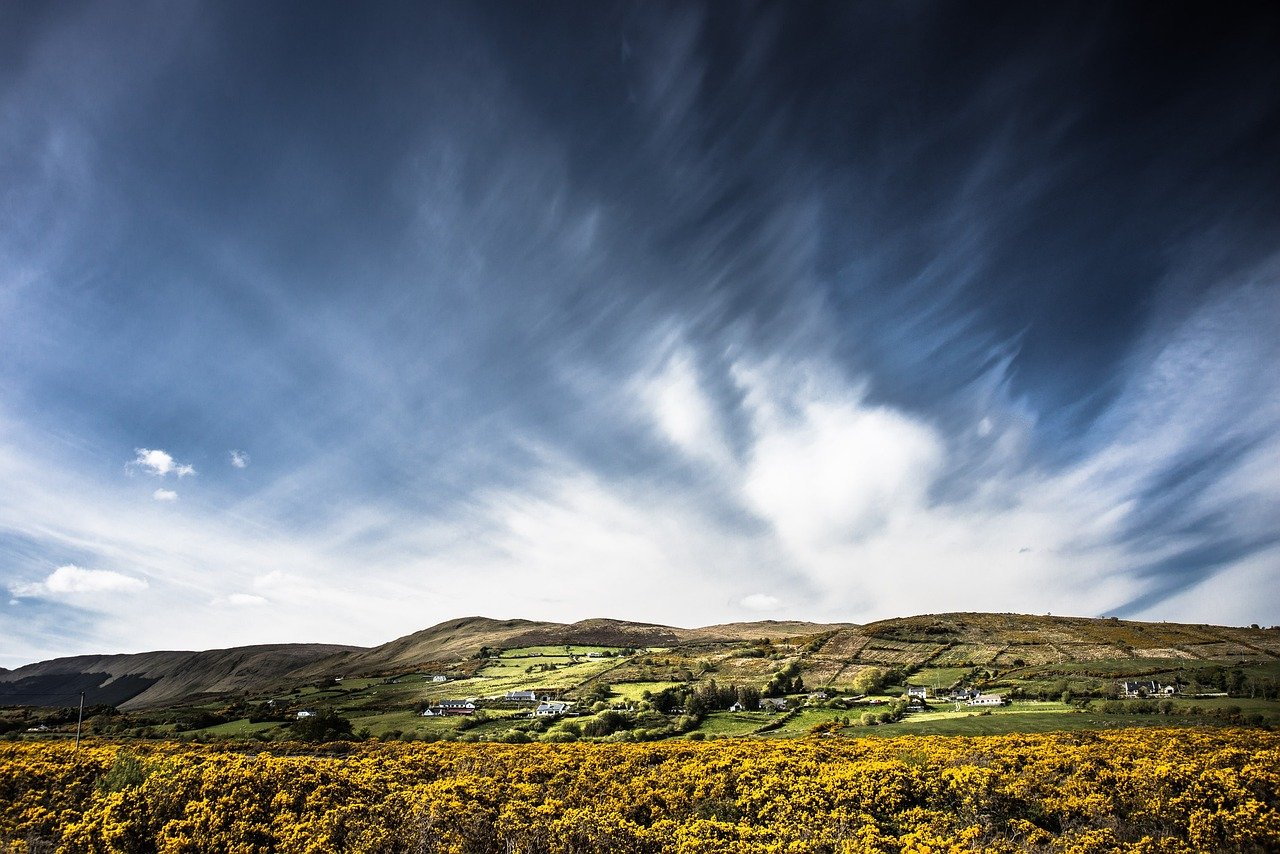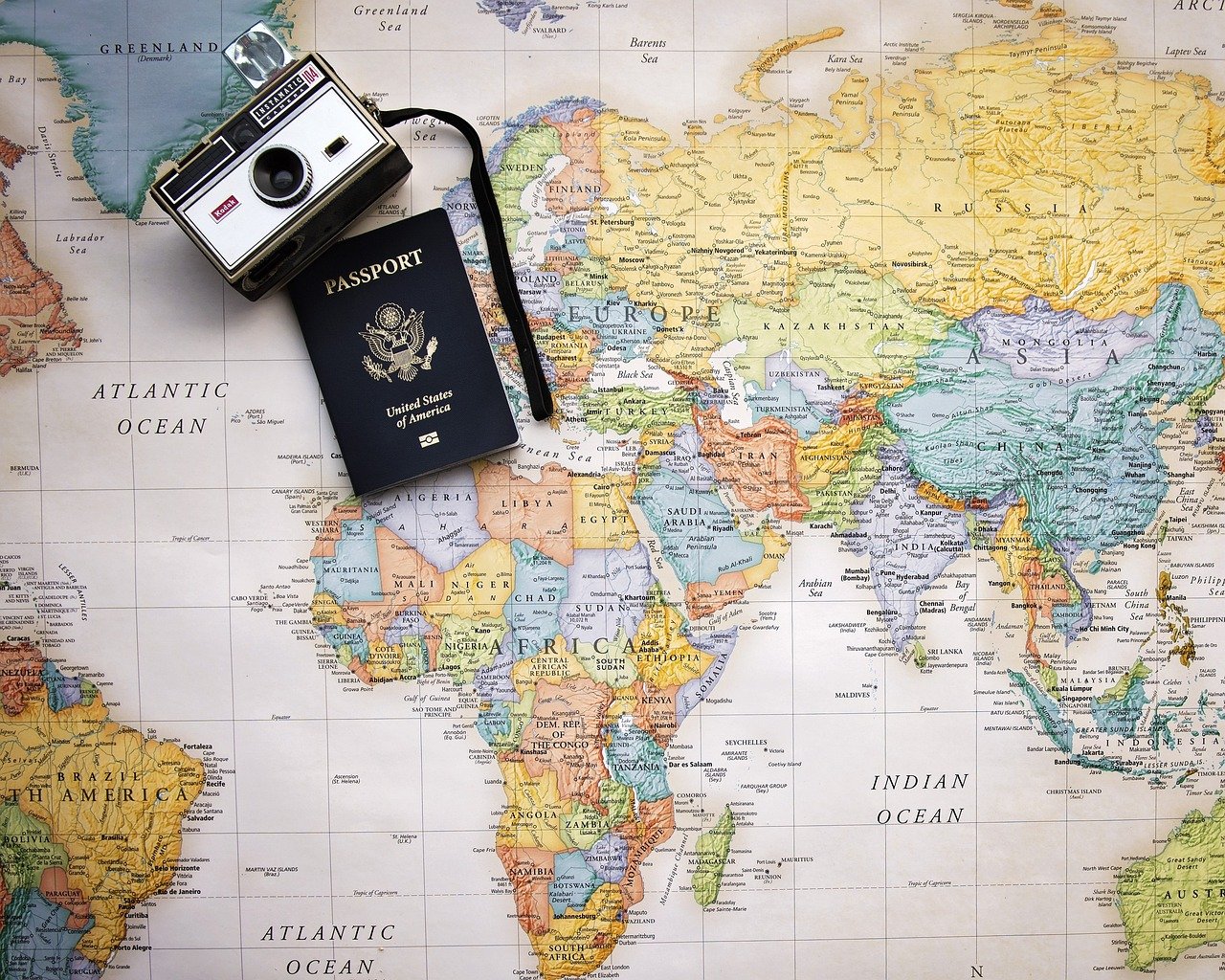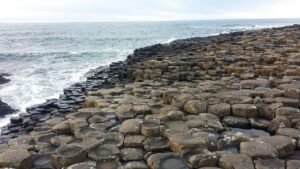
Planning a trip to Ireland? Look no further for some essential travel tips! Whether you’re a first-time visitor or a seasoned traveler, we’ve got you covered. From breathtaking landscapes to friendly locals, Ireland has something for everyone. In this article, you’ll discover insider tips sourced from the vibrant Reddit community. So grab a cup of tea, sit back, and get ready to embark on an unforgettable Irish adventure!
When to Visit
Best time to visit Ireland
When it comes to deciding on the best time to visit Ireland, it really depends on your personal preferences and what you want to experience during your trip. However, it is worth noting that Ireland’s weather can be quite unpredictable, regardless of the time of year. That being said, many people consider the months of May to September to be the best time to visit as the weather is generally milder and the days are longer. This is also the peak tourist season, so you can expect more crowds and higher prices during this time. If you prefer fewer tourists, the shoulder seasons of April and October can be a good option.
Considerations for each season
Each season in Ireland has its own unique charm and considerations. In spring (March to May), you can expect milder temperatures and beautiful blooming flowers, but also occasional rain showers. Summer (June to August) brings longer days, festivals, and outdoor activities, but be prepared for some drizzle and busier tourist hotspots. Autumn (September to November) offers stunning foliage and quieter attractions, but the weather can be more unpredictable. Winter (December to February) brings fewer crowds and lower prices, but it can also be quite cold and rainy, with shorter daylight hours.
Avoiding peak tourist times
If you prefer to avoid the crowds and higher prices that come with peak tourist season, there are a few strategies you can consider. Firstly, opting to visit during the shoulder seasons of April and October can provide a good balance between decent weather and fewer tourists. Moreover, planning your visit during weekdays rather than weekends can also help in avoiding the busiest times. Additionally, consider exploring lesser-known destinations and off-the-beaten-path attractions, as these are less likely to be crowded with tourists. Overall, with careful planning and flexibility, it is possible to enjoy Ireland’s beauty without feeling overwhelmed by the crowds.
Getting Around
Transportation options in Ireland
When it comes to getting around Ireland, you have several transportation options to choose from. These include renting a car, using public transportation, and utilizing ferry services.
Renting a car
Renting a car is a popular choice for many visitors to Ireland as it offers the flexibility to explore the country at your own pace. Ireland has a well-maintained road network, although some rural areas may have narrower and winding roads. It is important to note that driving is on the left-hand side of the road in Ireland. Make sure to familiarize yourself with the rules of the road and have a valid driver’s license. Prioritize booking your rental car in advance, especially during peak tourist season, as availability can be limited.
Using public transportation
If you prefer not to drive, Ireland has an efficient and extensive public transportation system. Buses and trains are the main modes of public transportation, connecting various cities and towns across the country. Bus Eireann and Irish Rail are the main operators, offering regular services to popular tourist destinations. It is advisable to check the schedules in advance, especially for less frequent routes. Additionally, public transportation can be a cost-effective option compared to renting a car, and it allows you to sit back and enjoy the scenery without worrying about navigation.
Navigating the roads and signage
If you do decide to rent a car and drive in Ireland, it is important to familiarize yourself with the road signs and navigation systems. Road signs in Ireland are generally in English and use internationally recognized symbols. However, some signs may also have Irish language translations. Pay attention to speed limits, which are typically displayed in kilometers per hour (km/h). GPS navigation systems are widely available, but it is always a good idea to have a physical map or use a reliable navigation app as a backup.
Ferry services
Ireland’s coastline offers opportunities for exciting island adventures. Ferry services operate between Ireland and neighboring islands such as the Aran Islands and Inishbofin, providing a unique way to explore these beautiful and remote destinations. Ferry services also connect Ireland with other countries such as the United Kingdom. If you’re considering taking a ferry, be sure to check the schedules and book in advance, especially during peak travel times.

Currency and Money Matters
Currency in Ireland
The official currency of Ireland is the Euro (€). Make sure to familiarize yourself with the denominations and coins to have a better understanding of the currency system. It is advisable to carry some cash in Euros for smaller establishments or places that may not accept credit cards.
Exchanging currency
If you need to exchange currency, it is recommended to do so at banks or official currency exchange offices. Avoid exchanging money at airports or high-traffic tourist areas as they often have higher fees and less favorable exchange rates. It’s also a good idea to notify your bank and credit card company of your travel plans to avoid any issues with accessing your funds or potential fraud alerts.
ATMs and credit cards
ATMs are widely available in Ireland, and most accept international debit and credit cards. However, it is advisable to check with your bank prior to traveling to ensure your card will work abroad and to inquire about any fees or restrictions. Credit cards are widely accepted in hotels, restaurants, and larger establishments, but it’s always a good idea to carry some cash for smaller businesses or those in more rural areas.
Tipping customs
Tipping in Ireland is generally appreciated but not mandatory. In restaurants, a service charge may already be included in the bill, in which case an additional tip is not necessary. If a service charge is not included, it is customary to leave a tip of around 10-15% of the total bill. It is also polite to tip porters, taxi drivers, and tour guides if you feel the service provided was exceptional. In bars, rounding up the bill or leaving a small amount as a tip is common practice. Ultimately, tipping is based on personal discretion and satisfaction with the service received.
Accommodation
Types of accommodation in Ireland
When it comes to accommodation options in Ireland, there is something to suit every traveler’s preferences and budget. From luxurious hotels to cozy bed and breakfasts, budget-friendly hostels, self-catering options, and even camping or caravanning, Ireland offers a diverse range of choices.
Hotels and guesthouses
Hotels and guesthouses can be found throughout Ireland, ranging from internationally recognized chains to charming boutique options. Hotels typically offer a range of amenities such as restaurants, bars, gyms, and sometimes even spa facilities. Guesthouses are often family-run establishments and provide a more personal touch with friendly hosts. Prices and quality vary depending on the location and services offered.
Bed and breakfasts
Bed and breakfasts (B&Bs) are a popular option for those seeking a cozy and intimate accommodation experience. B&Bs are typically family-owned and offer comfortable rooms, a hearty Irish breakfast, and a warm atmosphere. This type of accommodation is often found in rural areas, allowing travelers to immerse themselves in the local culture and enjoy the countryside.
Hostels
For budget-conscious travelers or those looking to meet fellow adventurers, hostels are a great option. Hostels offer shared dormitory-style rooms as well as private rooms, and common areas where travelers can socialize. Facilities often include communal kitchens, laundry facilities, and sometimes even organized activities or tours. Hostels are particularly popular with younger travelers and backpackers.
Self-catering options
If you prefer more independence and the ability to cook your own meals, self-catering options such as apartments, cottages, or holiday homes may be the perfect choice. These accommodations provide fully equipped kitchens and living spaces, allowing you to create your own home away from home. Self-catering options are particularly suitable for families or groups traveling together, as they offer more space and privacy.
Camping and caravanning
For those who enjoy the great outdoors and a sense of adventure, camping and caravanning are excellent options. Ireland boasts stunning campsites set amidst beautiful landscapes, ranging from coastal spots to woodland areas. Camping allows you to truly immerse yourself in nature and enjoy the peace and tranquility of the Irish countryside. Caravanning provides the convenience of a mobile home and the freedom to explore different regions of Ireland at your own pace.

Safety Tips
General safety precautions
While Ireland is generally a safe country to visit, it is always important to take certain safety precautions. Keep your belongings secure and be aware of your surroundings, especially in crowded tourist areas or cities. Avoid displaying large sums of money or valuable items, and use lockers or safes provided by your accommodation when necessary. Stay informed about local laws and customs to ensure you respect the cultural norms of the area you’re visiting.
Emergency numbers and services
Familiarize yourself with Ireland’s emergency numbers, such as 112 for all emergencies, including police, fire, and medical assistance. Program these numbers into your phone or have them readily accessible in case of an emergency. If you require medical attention, Ireland has a well-equipped healthcare system, with hospitals and clinics located across the country.
Healthcare and medical facilities
It is highly recommended to have appropriate travel insurance that covers any medical expenses in case of illness or injury. Ireland has a public healthcare system known as the Health Service Executive (HSE), but most tourists opt for private medical facilities. Keep in mind that medical costs can be expensive, so having travel insurance for the duration of your trip is essential.
Weather considerations
Ireland’s weather can be quite changeable, so it’s important to be prepared for different conditions. Carry a lightweight waterproof jacket or a compact umbrella to protect yourself from rain showers. Layered clothing is also recommended, as it allows you to adjust your attire depending on the fluctuating temperatures. It’s advisable to check weather forecasts and pack accordingly, as weather conditions can impact outdoor activities and sightseeing plans.
Attractions and Landmarks
Must-visit attractions in Ireland
Ireland is renowned for its stunning landscapes and rich history, offering a myriad of must-visit attractions for travelers. Some of the top attractions include:
Historical landmarks
Step back in time and explore Ireland’s historical landmarks such as the iconic Rock of Cashel, the ancient burial site of Newgrange, the medieval fortress of Blarney Castle, and the beautiful ruins of Dunluce Castle. These landmarks provide a glimpse into Ireland’s fascinating past and offer breathtaking views of the surrounding countryside.
Natural wonders
From the rugged Cliffs of Moher, to the mystical Giant’s Causeway, and the enchanting landscapes of the Ring of Kerry, Ireland is filled with natural wonders that will leave you in awe. Explore the unique rock formations, stunning coastal cliffs, and lush green valleys that make up Ireland’s diverse and picturesque scenery.
Castles and ruins
Ireland is home to countless castles and ruins, each with its own story to tell. Visit the majestic Ashford Castle, the imposing ruins of Dun Aonghasa on the Aran Islands, or the fairytale-like surroundings of Kylemore Abbey. These historic sites offer a glimpse into Ireland’s architectural heritage and provide a backdrop for unforgettable photos.
Museums and cultural sites
Immerse yourself in Ireland’s vibrant culture and history by visiting the country’s museums and cultural sites. Explore the ancient artifacts at the National Museum of Ireland, learn about the Great Famine at the EPIC Irish Emigration Museum, or appreciate contemporary Irish art at the Irish Museum of Modern Art. These cultural attractions provide insight into Ireland’s rich heritage and artistic expressions.
Parks and gardens
Experience the tranquility of Ireland’s parks and gardens, where you can escape the hustle and bustle of city life. Explore the serene beauty of Killarney National Park, stroll through the meticulously manicured gardens of Powerscourt Estate, or enjoy the peaceful atmosphere of St. Stephen’s Green in Dublin. These natural oases offer opportunities for leisurely walks, picnics, and wildlife spotting.

Food and Drink
Traditional Irish cuisine
Irish cuisine is known for its hearty and comforting dishes that are perfect for fueling your adventures. Traditional Irish cuisine often includes dishes such as Irish stew, made with tender lamb or beef, potatoes, onions, and carrots, and the iconic full Irish breakfast, consisting of bacon, sausages, black and white pudding, eggs, and grilled tomatoes. Other popular dishes include colcannon (mashed potatoes with kale or cabbage), boxty (potato pancakes), and seafood chowder.
Popular dishes and drinks
In addition to traditional Irish cuisine, Ireland offers a wide variety of dishes and drinks that cater to diverse tastes. Indulge in fresh seafood, such as Dublin Bay prawns or Galway oysters, or savor a creamy seafood chowder. Fish and chips, a beloved classic, can be found in many coastal towns. For those with a sweet tooth, try traditional treats like Irish soda bread, sticky toffee pudding, or a slice of rich and decadent Guinness cake. Don’t forget to accompany your meals with a pint of Ireland’s famous Guinness stout or a glass of Irish whiskey.
Vegetarian and vegan options
Vegetarian and vegan travelers will find that Ireland has a growing number of options to cater to their dietary preferences. Many restaurants and cafes now offer vegetarian and vegan menu items, and some establishments are dedicated exclusively to plant-based cuisine. In larger cities like Dublin and Cork, you’ll have plenty of options to choose from, ranging from vegan burgers and pizzas to innovative plant-based dishes using locally sourced ingredients.
Pubs and nightlife
No visit to Ireland would be complete without experiencing the vibrant pub culture. Pubs are not only places to enjoy a pint but also social hubs where locals and visitors gather to engage in lively conversations and listen to traditional music sessions. From cozy traditional pubs with roaring fires to trendy modern bars with live music, there is a pub to suit every taste. Sample a range of local beers, ciders, and spirits, and soak up the friendly atmosphere that Ireland’s pubs are famous for.
Etiquette and Customs
Politeness and manners
Politeness and good manners are highly valued in Irish culture. When interacting with locals, remember to use common courtesies such as saying “please” and “thank you.” Respect personal space and avoid being overly loud or brash in public places. If you need to ask for directions or assistance, approach individuals with a friendly and polite demeanor.
Greetings and social interactions
Greetings in Ireland typically involve a handshake or a warm smile, accompanied by a simple “hello” or “good day.” When meeting someone for the first time, it is customary to introduce yourself with your name. In casual social settings, it is common to engage in friendly banter and humor, as Irish people are known for their wit and storytelling abilities. However, be mindful not to offend or make jokes at the expense of others.
Respecting Irish culture and traditions
Respecting Irish culture and traditions is important when visiting Ireland. Show an interest in the local heritage and history, and be open to learning about Irish customs and celebrations. Participate in local traditions such as St. Patrick’s Day festivities or traditional music sessions, but do so with respect and genuine enthusiasm. Taking the time to appreciate and understand Irish culture will enhance your overall experience.
Etiquette in pubs and restaurants
When dining in pubs and restaurants, be aware of the etiquette and customs that are typically followed. In pubs, it is customary to order your food and drinks at the bar and settle your bill when leaving. In restaurants, it is polite to wait to be seated and to tip for good service, as mentioned earlier. It is also common to engage in friendly conversation with the staff or other patrons, as pubs and restaurants often foster a sociable atmosphere.
Language and Communication
Official language of Ireland
The official language of Ireland is Irish Gaelic, also known simply as Irish. However, the majority of the population speaks English fluently, and English is widely used for everyday communication.
Commonly spoken languages
English is the most commonly spoken language in Ireland, and you will have no trouble communicating in English throughout your visit. However, in certain areas, particularly in the Gaeltacht regions of western Ireland, you may hear locals speaking Irish Gaelic. While not necessary for everyday communication, learning a few basic phrases in Irish Gaelic can be a fun way to explore Ireland’s linguistic heritage.
Useful phrases and expressions
Learning a few basic phrases in Irish Gaelic or “Gaeilge” can help you connect with the local culture and make a positive impression. Here are a few useful phrases:
- Dia duit (Hello)
- Slán (Goodbye)
- Go raibh maith agat (Thank you)
- Tá fáilte romhat (You’re welcome)
- Conas atá tú? (How are you?)
- Sláinte (Cheers)
Understanding accents and dialects
In Ireland, you may encounter a variety of accents and dialects, which can sometimes make understanding the spoken language a bit challenging, especially if you’re not familiar with the regional variations. Remember to listen attentively and ask for clarification if needed. Locals are often happy to repeat or explain something if you express that you’re having trouble understanding.
Packing Tips
Essential items to pack for Ireland
When packing for your trip to Ireland, there are a few essential items that you should consider bringing with you:
- A sturdy and reliable backpack or travel bag to carry your belongings.
- A good quality and waterproof jacket to protect you from Ireland’s unpredictable weather.
- Comfortable clothing, including layers that can be easily added or removed to adapt to changing temperatures.
- A pair of comfortable walking shoes for exploring Ireland’s beautiful landscapes.
- An umbrella or a raincoat for those unexpected showers.
- Adapters and converters to charge your electronic devices, as Ireland uses a different type of power outlet (Type G) compared to some other countries.
Weather-appropriate clothing
As mentioned before, Ireland’s weather can be changeable, so it’s important to pack weather-appropriate clothing. Layered clothing is key, as it allows you to adjust your attire according to the temperature and weather conditions. Don’t forget to pack lightweight, breathable clothing for warmer days, but also pack warmer layers and thermal clothing for cooler temperatures. A hat, scarf, and gloves can also come in handy, especially during the colder months.
Rain gear and layers
With Ireland’s frequent rain showers, it’s important to be prepared with rain gear. A waterproof jacket or a raincoat with a hood is essential, as well as waterproof pants or a poncho to keep you dry. Consider packing a small travel umbrella that can easily fit in your backpack. Layered clothing is also essential as it provides versatility for adjusting to different weather conditions throughout the day. Pack lightweight tops, sweaters or fleeces, and a durable pair of waterproof hiking boots or walking shoes.
Comfortable footwear
Exploring Ireland often involves a fair amount of walking, so it’s crucial to pack comfortable and supportive footwear. A pair of waterproof hiking boots or sturdy walking shoes with good tread is recommended for tackling uneven terrain and wet conditions. Additionally, pack a pair of comfortable shoes for more casual and urban activities. Regardless of the footwear you choose, make sure to break them in before your trip to avoid any discomfort or blisters.
Adapters and converters
When traveling to Ireland, it’s important to have the correct adapters and converters to charge your electronic devices. Ireland uses Type G power outlets, which have three rectangular pins. Ensure that you have the appropriate adapters for your devices, allowing you to plug them into Irish power outlets. It is also worth checking the voltage of your devices, as Ireland operates on a 230V/50Hz electrical system. If your devices require a different voltage, you may need a voltage converter in addition to an adapter.
With these comprehensive tips, you should be well-equipped to plan your trip to Ireland. Remember to consider the best time to visit, explore the various transportation options, familiarize yourself with currency and tipping customs, choose the right type of accommodation, and prioritize safety during your travels. Immerse yourself in Ireland’s rich culture, explore its captivating attractions, indulge in delicious food and drink, and embrace the warm hospitality of the Irish people. Sláinte!





